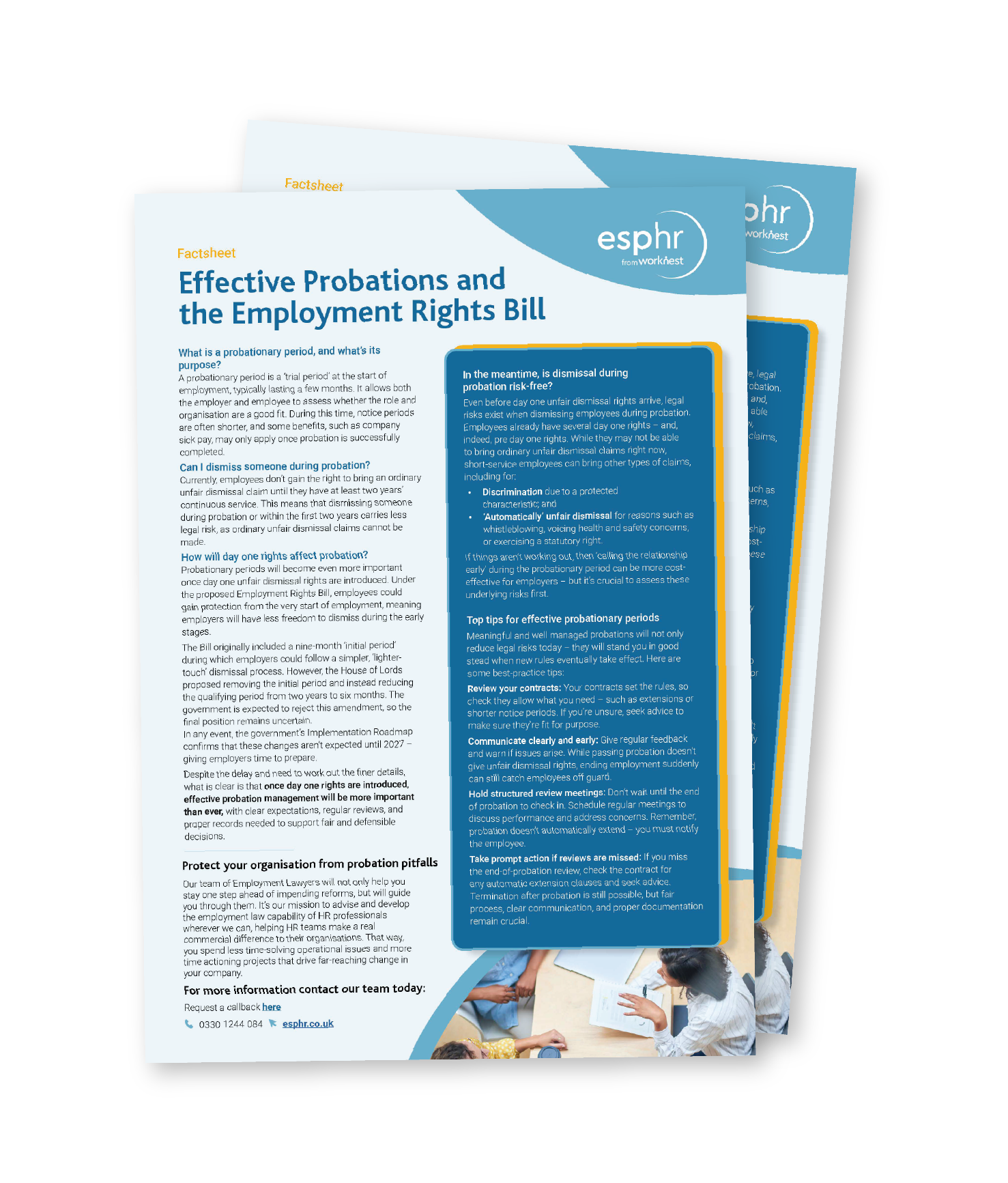Protection against discrimination is a day one right for employees, however, more recently, there has been talk around ‘dual discrimination’, with the Labour Party proposing to enact this previously unacted provision in the Equality Act 2010 as part of various extensions to discrimination laws. But what is dual discrimination, and how concerned should employers be about this concept?
In the UK, workers are protected from discrimination based
on nine “protected characteristics”. These are age, disability, gender reassignment, marriage
and civil partnership, pregnancy and maternity, race, religion or belief, sex,
or sexual orientation. The crux of the discrimination protection is whether or
not a worker suffers a detriment because of a protected characteristic.
What is dual discrimination?
The concept of dual discrimination comes from a dormant provision in the Equality Act 2010 that has never actually been enacted.
As drafted, dual discrimination expands protections to cover individuals who may not have been found to have been discriminated against based on two individual protected characteristics, but could arguably be found to be discriminated against when these protected characteristics are combined, for instance, being an older woman rather than age or sex independently. Notably, the protected characteristics relevant for dual discrimination do not include marriage and civil partnership or pregnancy and maternity.
How do Employment Tribunals currently handle dual discrimination?
An illustrative case is O’Reilly v BBC, where the claimant argued that she was removed as a presenter on Countryfile and not offered other suitable work because she was both a woman and over 50.
The BBC brought the hypothetical argument that a rule which prevented a woman over 40 from applying for a job would be neither direct sex or age discrimination, as not all women would be precluded from applying and not all persons over 40 would be precluded from applying.
This argument did not find favour with the Tribunal, who stated that, age or sex did not need to be the sole reason, or even the principal reason, for her detrimental treatment. The Tribunal found that O’Reilly’s age was a significant factor in the BBC’s decision not to keep her as a presenter.
The Tribunal did not find sex discrimination. It is therefore unclear as to whether or not, if dual discrimination was enacted, it would have actually assisted the claimant in this case.
This case strongly suggests that an employee who is directly discriminated against because of a combination of protected characteristics is likely protected by existing direct discrimination law, without the help of the dual discrimination provision. Many of the examples that you will read of online of where employees will gain protection because of dual discrimination will therefore already be covered by existing discrimination law.
Would enacting dual discrimination make a difference?
It is claimed that enacting dual discrimination would simplify the claims process, by allowing claimants to bring a single claim rather than multiple claims. For instance, a Black woman who faces sexism and racism would bring a single dual discrimination claim rather than two separate claims (one for sex discrimination and another for race discrimination).
However, this will not simplify the process for Tribunals, claimants, or employers significantly. Simply put, a claimant can already list multiple claims on a single claim form, and frequently do so. Moreover, in order to give a Judgment on a dual discrimination claim, the Tribunal would need to examine both elements of a dual discrimination claim. As such, we are yet to see how this will provide meaningful impact on the current legal landscape.
What should employers do?
It’s clear that Tribunals will carefully assess discrimination claims and look to provide protection to employees who have been discriminated against.
As ever, media reports surrounding this topic are likely to spark queries from employees, as well as claims – regardless of whether or not a law has come into force. With this in mind, when issues arise within a working relationship, employers should consider whether there are any discrimination concerns. We always recommend seeking specialist advice in these situations to assess and minimise risk.
Looking ahead
It appears that a prospective Labour government is signalling its intention to enhance discrimination protection for employees. As such, there is real potential for the law on discrimination to change. If a change in government does happen, it will be crucial for employers to keep abreast of these changes and update policies and procedures accordingly.




